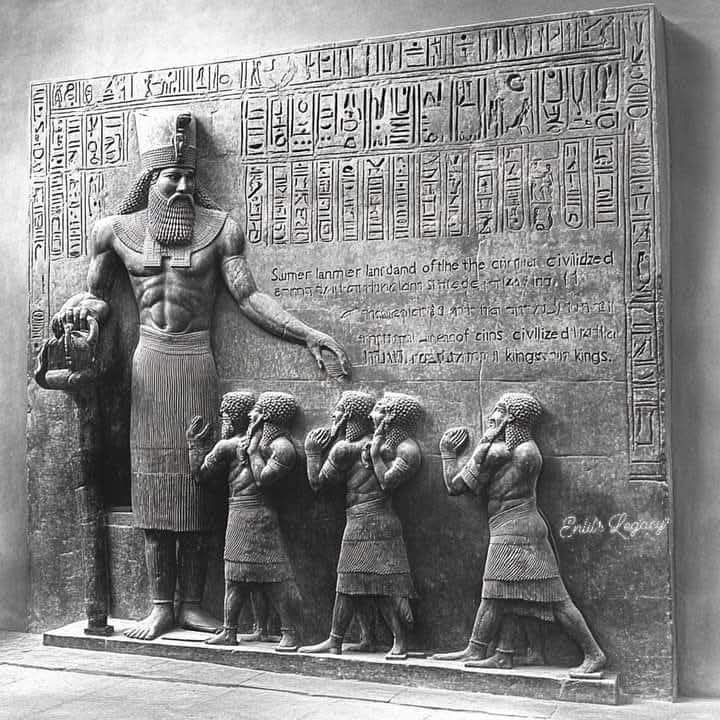
What if old tales from long ago hold clues to beings from the stars? The Anunnaki pop up in ancient stories from Meso...
Related Blogs
About the annunaki
13 minutes, 52 seconds
-44 Views 0 Comments 0 Likes 0 Reviews

Unraveling the Anunnaki: Ancient Gods or Alien Visitors?
What if old tales from long ago hold clues to beings from the stars? The Anunnaki pop up in ancient stories from Mesopotamia. They stir up questions for history fans and those who wonder about aliens. This piece digs into their roots in Sumerian myths. It looks at what they meant back then and how ideas about them changed today. We'll check out texts like the Epic of Gilgamesh and books by Zecharia Sitchin. These sources help us see the Anunnaki as gods or maybe something more.
The Anunnaki link old wisdom to wild theories about UFOs. They show up in clay tablets from places like Sumer. Modern thinkers tie them to ideas of space visitors who shaped our world. This guide breaks it down for you. If you love myths or doubt bold claims, you'll find clear facts here. It covers their place in culture and why they still catch our eye. Let's start with where it all began.
Origins of the Anunnaki in Ancient Mesopotamia
The Anunnaki first appear in texts from around 2100 BCE. These come from the Third Dynasty of Ur. They fit into a big group of gods in early city-states. Stories paint them as powerful beings who ruled the heavens and earth.
Scholars pull from cuneiform writings to trace their story. This gives a solid base for anyone searching "Anunnaki Sumerian origins." Timelines show they grew in importance over centuries. By 2000 BCE, their tales spread across the region.
The Etymology and First Mentions in Sumerian Texts
The word Anunnaki means "offspring of An" or "princely seed." An was the sky god in Sumer. This name shows their high status right from the start. Early mentions come from clay tablets dug up in old cities.
Take the Sumerian King List. It lists rulers and ties them to divine help from the Anunnaki. Around 2100 BCE, scribes wrote about creation myths. Here, Enki and Enlil play key roles as Anunnaki leaders. These texts mix gods with human kings. They set the stage for later epics.
You can see their influence in family stories of the gods. Enki shapes water and wisdom. Enlil controls winds and storms. This mix of roles makes the Anunnaki feel real and complex.
The Anunnaki in the Enuma Elish and Babylonian Mythology
The Enuma Elish is a big Babylonian poem from about 1800 BCE. It shows the Anunnaki as gods who help order the world. They gather under Marduk after a great battle. This shifts their role from Sumerian judges to supporters of a new king god.
Quotes from experts like Stephanie Dalley bring this to life. She translates lines where Anunnaki bow to Marduk's rule. "They set up his throne," one part says. This marks a change as Babylonian culture took over Sumerian ideas.
The Anunnaki now handle fate and laws. Their assembly decides big events. This evolution keeps their core power but adds new layers. It ties into searches for "Anunnaki Babylonian myths."
Archaeological Evidence from Mesopotamian Sites
Digs at Uruk and Nippur uncovered seals and inscriptions. These date back to 3000 BCE. They show Anunnaki figures in rituals and temples. Cylinder seals depict them with kings, proving their divine link.
At Nippur, a key site for Enlil worship, tablets list Anunnaki names. These finds confirm their place without wild guesses. No proof of aliens here—just gods in daily life.
Experts use these artifacts to map their spread. From 2500 BCE onward, Anunnaki temples dotted the land. This evidence boosts trust in "Anunnaki archaeology" facts.
Roles and Hierarchies in Anunnaki Mythology
In myths, the Anunnaki act like a divine team. They have ranks and jobs, much like a human government. This structure shows up in tales of creation and floods.
Their family tree looks like a chart of power. Top gods lead, while others follow. Humans interact with them through prayers and stories. This setup makes the myths engaging and easy to picture.
References to these hierarchies appear in epics. They add drama to god-human ties. For visual aids, imagine an infographic of their ranks.
Key Figures: Anu, Enlil, and Enki as Leaders
Anu rules the sky as the top Anunnaki. He stays distant but holds ultimate say. Enlil takes charge on earth, often strict with humans. Enki brings smarts and water, helping in tricky spots.
In the Atrahasis epic, this trio decides human fate. They create people to ease god work but later send a flood. Zecharia Sitchin saw them as alien bosses, yet scholars debate that view. It adds flavor but sticks to text facts.
These leaders form a core triad. Their clashes drive many stories. You feel the pull between mercy from Enki and wrath from Enlil.
The Anunnaki's Influence on Human Creation and Fate
Myths say the Anunnaki made humans from clay. In Atrahasis, Enki mixes blood with dirt to form workers. This eases the gods' toil in the mines and fields.
The flood tale mirrors Noah's story. Enlil tires of noisy humans and wipes them out. Enki warns a man to build a boat. Samuel Noah Kramer notes this in his book on Sumer. It shows Anunnaki as creators and destroyers.
Their hand in fate shaped early views of life. Humans owe them labor and worship. This theme runs deep in Mesopotamian lore.
Divine Council and Decision-Making Processes
The Anunnaki meet as a council of 50 or up to 600 gods. They vote on world events in texts like the Descent of Inanna. Inanna's trip to the underworld shakes their order.
Hierarchy matters here. Leaders speak first, but all have input. Rebellions add tension, like junior gods pushing back.
This council acts like a senate in the sky. It decides wars, floods, and kings. The process highlights their organized power.
Modern Interpretations and Zecharia Sitchin's Theories
By the 1900s, the Anunnaki caught new eyes. Thinkers linked them to space ideas. Sitchin's books sparked a boom in alien theories.
This shift appeals to fans of hidden history. Searches for "Anunnaki aliens" spike with his name. Yet, we balance bold claims with checks from experts.
Pop takes twist the myths into fun stories. It keeps the Anunnaki alive in our time.
Sitchin's Ancient Astronaut Hypothesis
Zecharia Sitchin wrote "The 12th Planet" in 1976. He claims Anunnaki came from Nibiru, a lost planet. They mined gold on Earth and made humans as slaves.
Sitchin based this on his read of Sumerian tablets. He saw them as space travelers who tinkered with genes. His ideas hit books, TV, and talks. It turned Anunnaki into star-crossed visitors.
This view grabs those who question standard history. It paints a wild picture of our past.
Criticisms from Mainstream Scholars
Experts like Michael Heiser point out flaws in Sitchin's work. His translations mix up words and miss context. Journals such as the Journal of Cuneiform Studies call them wrong.
Scholars say Anunnaki were just gods, not ETs. No texts mention Nibiru as a planet base. This pushback keeps things grounded.
Debates rage on, but facts win over guesses. It helps you sort real from hype.
Anunnaki in Popular Culture and Media
Books and shows love the Anunnaki twist. The Stargate series turns them into ancient aliens. Documentaries mix myths with UFO clips.
Films like Prometheus borrow their creation ideas. This spreads the lore to new fans. Check old texts first to spot true bits from made-up ones.
Their spot in media shows staying power. It blends old gods with sci-fi fun.
Debates and Evidence: Fact vs. Fiction
Weigh the proofs now. Ancient texts hold steady facts. Modern spins add questions but lack hard proof.
This part looks at language clues and links to other cultures. It pushes you to think sharp. For "Anunnaki evidence debunked," here's a fair look.
Pros include rich myths. Cons? No bones or tech to back alien tales.
Linguistic and Textual Analysis of Sumerian Sources
Thorkild Jacobsen reads Anunnaki texts as pure myth. He ties words to god roles, not space trips. Speculative links stretch meanings too far.
Use sites like the Electronic Text Corpus of Sumerian Literature. It lets you check originals yourself. This tool cuts through bad takes.
Clear analysis shows gods in a local world. No need for stars to explain them.
Connections to Other Ancient Cultures
Anunnaki echo in Egyptian Neteru, a group of deities. Biblical Nephilim might link to fallen angels. But ties stay loose, per Mircea Eliade's studies.
No direct proof joins them all. Myths share themes like floods worldwide. It hints at common human fears, not shared visitors.
Spot these parallels to see bigger patterns. It enriches the story without wild jumps.
Scientific Perspectives on Extraterrestrial Claims
Astronomers say no to Nibiru. NASA checks show no rogue planet near us. No fossils or tools prove alien meddling.
Peer sources debunk space god ideas. Stick to them to dodge false info. Science favors earth-bound myths.
This view clears the air. It lets myths shine on their own.
Conclusion: The Enduring Legacy of the Anunnaki
The Anunnaki offer a window into old dreams of power and birth. They stand as gods in Sumerian tales, full of rank and choice. Modern views like Sitchin's stir fun debates, yet experts urge caution.
Key points stick: Texts root them in Mesopotamia's heart. Creation stories and councils shaped early views. Approach bold claims with a sharp eye.
Dive into epic translations to build your take. The Anunnaki call us to ponder skies and roots. What do you think they were? Share your thoughts and keep questioning.
Photos

